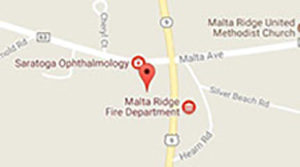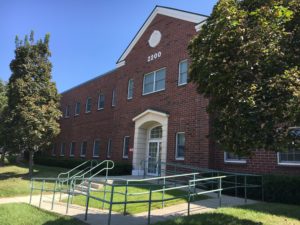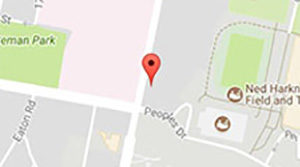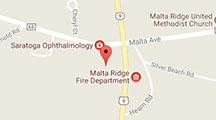About Us
At Saratoga Ophthalmology, our goal is to help you find the answers and treatment plans for your condition. More importantly, we want to try our best to help you get your quality of life back as much as possible. We will help you understand the causes of your eye problems and will help guide you to healthy eye care.
At Saratoga Ophthalmology we treat Vitreo-Retinal, Oculo Plastic and Neuro Ophthalmic conditions.
Dr. Amjad Hammad is a Retina Specialist and the Medical Director for The Center for Vitreo-Retinal at Saratoga Ophthalmology.
Dr. Charles Rheeman and Dr. Gregory Krohel are Oculo Plastic and Neuro Ophthalmology Specialists. Dr. Rheeman is the Medical Director for The Center for Oculo Plastic and Neuro Ophthalmology at Saratoga Ophthalmology.
What is a Retina Specialist?
A retina specialist is a medical doctor who has specialized in ophthalmology and whom has then sub-specialized in diseases and surgery of the vitreous body of the eye and the retina. This subspecialty is sometimes known as vitreo-retinal medicine.
Retina specialists are highly trained. They must complete medical school and specialized training as an ophthalmologist, and then pursue additional vitreoretinal training. The full breadth of training for a retina specialist includes:
- Medical School – 4 years
- Internship – 1 year
- Ophthalmology Residency – 3 years
- Retina-Vitreous Fellowship – 1 or 2 years
What does a Retina Specialist do?
A retina specialist is a highly trained subspecialist with special skills to diagnose and treat specific parts of the complex human visual system. Diagnosis of retina and vitreous diseases may require technical equipment and testing as well as thorough examination.
The retina is a light-sensitive area in the back of the eye, and it includes the macula, which is made up of light-sensitive cells that give us our ability to have sharp, detailed vision. In a healthy eye, images are focused onto the retina and then converted into electrical signals that are sent to the brain for processing. The vitreous body of the eye is a clear gel, which fills the space between the retina and the lens. The retina, the macula, and the vitreous body can all be subject to diseases and conditions that can lead to blindness or vision interruption and may require the attention of a retina specialist.
The medical treatments and surgical procedures used by retina specialists are extremely exacting and delicate. Most of the surgeries require a microscope and are therefore microsurgical procedures. Retina-vitreous surgeons work on extremely delicate tissues in an incredibly small space. The laser is a vital part of the medical tools available to retina specialist and there are many office and hospital procedures in which a retina specialist will use a laser.
Retina specialists treat a variety of conditions, ranging from age-related macular degeneration to retinal detachment and cancers of the eye. A retina specialist may also treat a patient who has experienced severe eye trauma, and may be consulted in the case of patients dealing with hereditary diseases of the eye.
Some of the surgeries retina specialists perform are:
- Retinal Detachment Surgery
- Diabetic Vitrectomy
- Macular Pucker Vitrectomy
- Macular Hole Vitrectomy
- Macular Translocation
- Repair of Ruptured Globe
What is an Oculo Plastic and Neuro Ophthalmology Specialist?
An oculoplastic and neuro-ophthalmology specialist is a medical doctor, who has specialized in ophthalmology and is a highly trained subspecialist in providing medical and surgical treatment for various conditions involving the eyelids and orbits as well as taking care of eye or visual problems resulting from the diseases involving the central nervous system. These special skills allow us to diagnose and treat specific parts of the highly complex human visual system.
Oculoplastic and neuro-ophthalmology specialists must complete medical school and specialized training as an ophthalmologist, and then pursue additional sub-specialty training.
The full breadth of training includes:
- Undergraduate College – 4 years
- Medical School – 4 years
- Internship – 1 year
- Ophthalmology Residency – 3 years
- Oculoplastic and Neuro-Ophthalmology Fellowship – 1 year
What does an Oculo Plastic and Neuro Ophthalmology Specialist do?
The medical treatment and surgical procedures used by oculoplastic and neuro-ophthalmology specialist can be very complex, precise, and delicate. Oculoplastic and neuro-ophthalmology specialists work on extremely delicate tissues in an incredibly small space.
Specifically, a neuro-ophthalmologist is a doctor, who specializes in visual problems related to the central nervous system. Two most common problems a neuro-ophthalmologist takes care of are visual loss related to central nervous system and double vision. Visual impairment can occur due to injury to the brain or the optic nerves, which transmit visual signals from the eyes to the brain. Such injury can be caused by trauma, inflammation, stroke, tumor, toxicity, and infection. Double vision can be cause by numerous conditions, such as cranial neuropathy, thyroid ophthalmopathy, and myasthenia gravis. Double vision is commonly treated with prism glasses or eye muscle surgery.
TYPICAL DISORDERS WE TREAT:
- Optic Nerve Diseases
- Visual Loss
- Visual Field Loss due to Tumor or Stroke
- Double Vision or Ocular Motility Dysfunction in Association with Diseases of the Central Nervous System or Orbits
- Papilledema/Intracranial Hypertension
- Nystagmus
- Disorders of the Eyelids and Pupils
An oculoplastic surgeon is an ophthalmologist, who performs cosmetic and medically necessary procedures on the eyelids and orbits (bones and anatomic structures behind the eyeball). The field of oculoplastic surgery combines the precision and microsurgery of ophthalmology with the aesthetic and reconstructive concepts of plastic surgery.
TYPICAL REASONS FOR OCULOPLASTIC CONSULTATIONS INCLUDE:
- Ptosis – droopy upper eyelids
- Dermatochalasis – excess eyelid skin
- Eyelid spasm
- Lagophthalmos – inability to close the eye, for example, from Bell’s Palsy
- Proptosis – protruding eyes, for example, from Grave’s Disease
- Entropion – eyelid turning in
- Ectropion – eyelid turning out
- Eyelid and orbital tumors and cancers
- Wrinkles around the eyes
- Chalazion – stye
POSSIBLE TREATMENT OPTIONS:
- Ptosis repair – raising the droopy eyelid
- Blepharoplasty – removing the excessive skin on the eyelid for medical and cosmetic reasons
- Entropion or Ectropion repair
- Orbital decompression – removing orbital bone for extreme proptosis
- Eyelid and orbital tumor removal with reconstruction
- Eyelid retraction repair
- Gold weight insertion to the upper eyelid for people who cannot close their eye
- Botox or Xeomin injections
- Eye muscle surgery for people with congenital or acquired strabismus with or without double vision








